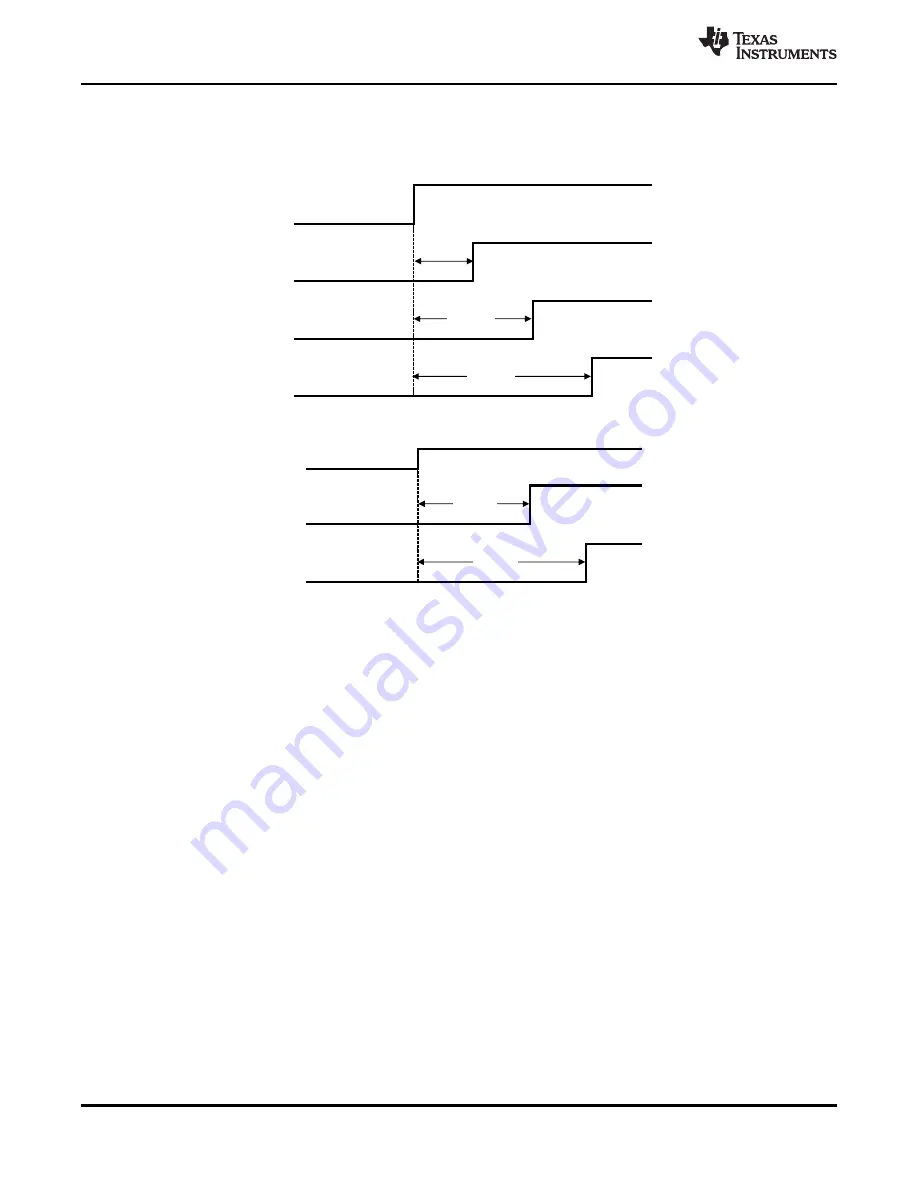
VIN
EN2
EN
5 ms
6 ms
VIN
SS
EN2
EN
2 ms
5 ms
6 ms
SLOS787H – MAY 2012 – REVISED APRIL 2014
When user MCU is controlling EN and EN2, a delay of 1 ms between EN and EN2 must be used. If the
MCU controls only EN, EN2 is recommended to be connected to either V
IN
or GND, depending on the
application MCU requirements for V
DD_X
and SYS_CLK.
Figure 6-3. Nominal Start-Up Sequence Using SPI With SS (MCU Controls EN2)
Figure 6-4. Nominal Start-Up Sequence Using Parallel (MCU Controls EN2)
This start-up mode lasts until all of the regulators have settled and the 13.56-MHz oscillator has stabilized.
If the EN input is set high (EN = 1) by the MCU (or other system device), the reader stays active. If the EN
input is not set high (EN = 0) within 100 µs after the SYS_CLK output is switched from auxiliary clock (60
kHz) to high-frequency clock (derived from the crystal oscillator), the reader system returns to complete
Power-Down Mode 1. This option can be used to wake-up the reader system from complete Power Down
(PD Mode 1) by using a pushbutton switch or by sending a single pulse.
After the reader EN line is high, the other power modes are selected by control bits within the chip status
control register (0x00). The power mode options and states are listed in
.
When EN is set high (or on rising edge of EN2 and then confirmed by EN = 1) the supply regulators are
activated and the 13.56-MHz oscillator started. When the supplies are settled and the oscillator frequency
is stable, the SYS_CLK output is switched from the auxiliary frequency of 60 kHz to the 13.56-MHz
frequency derived from the crystal oscillator. At this point, the reader is ready to communicate and perform
the required tasks. The MCU can then program the chip status control register 0x00 and select the
operation mode by programming the additional registers.
•
Stand-by Mode (bit 7 = 1 of register 0x00), the reader is capable of recovering to full operation in
100 µs.
•
Mode 1 (active mode with RF output disabled, bit 5 = 0 and bit 1 = 0 of register 0x00) is a low power
mode which allows the reader to recover to full operation within 25 µs.
•
Mode 2 (active mode with only the RF receiver active, bit 1 = 1 of register 0x00) can be used to
measure the external RF field (as described in RSSI measurements paragraph) if reader-to-reader
anticollision is implemented.
•
Modes 3 and 4 (active modes with the entire RF section active, bit 5 = 1 of register 0x00) are the
normal modes used for normal transmit and receive operations.
18
Detailed Description
Copyright © 2012–2014, Texas Instruments Incorporated
Product Folder Links:
















































